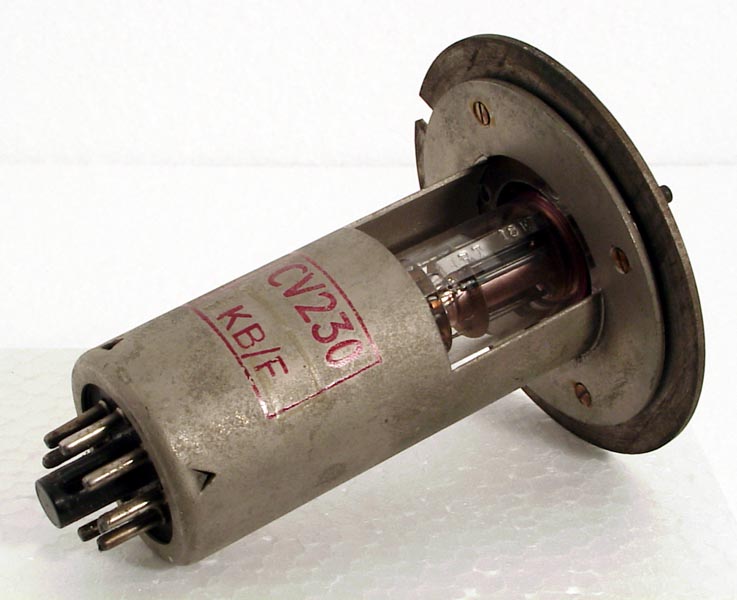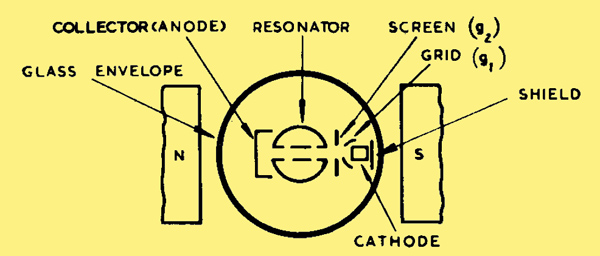|
Heil Tube

In 1935 Oskar Heil and his wife published a paper that described a pioneering generator of microwave energy. This was a velocity modulated valve where a beam of electrons could be made to clump into bunches and thus generate radio waves. This process generated energy of higher frequencies and power than earlier methods (See Barkhausen-Kurz Mode. Their work predated the independent development of the Klystron, also a velocity modulated device.

The basic layout of a Heil Tube oscillator.
This tube was based on a short length of coaxial copper tubing with some carefully placed slots. An electron beam directed into the device entered a high frequency electric field. The cyclic nature of such an electric field meant that some electrons accelerated to catch up some of those that went ahead before them but were moving more slowly. This had the effect of bunching the electrons into packets. When these packets hit the next part of the device, a series of grids called the catcher, they gave up energy that was detected as an oscillating field.
In later years Oskar Heil worked for STC in the UK but his wife remained in the Soviet Union. See the extras menu for the STC Heil Tube range.
|